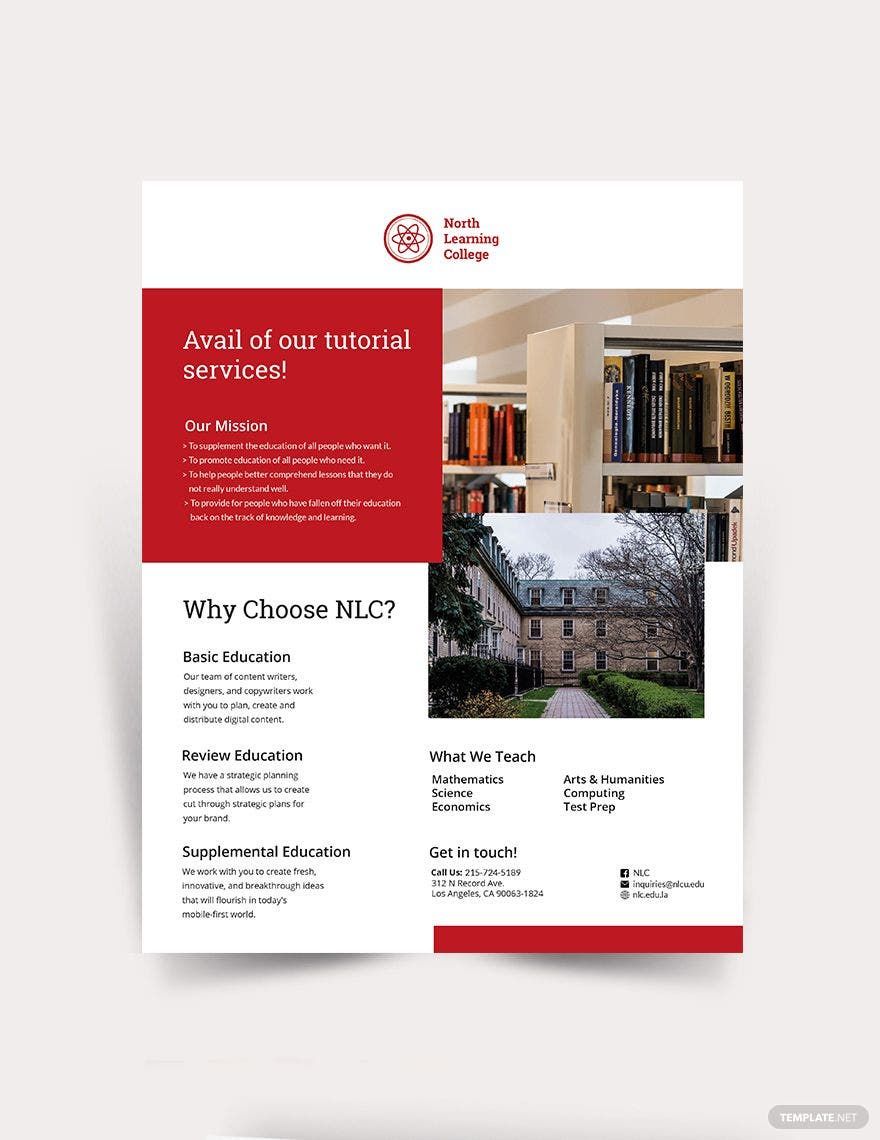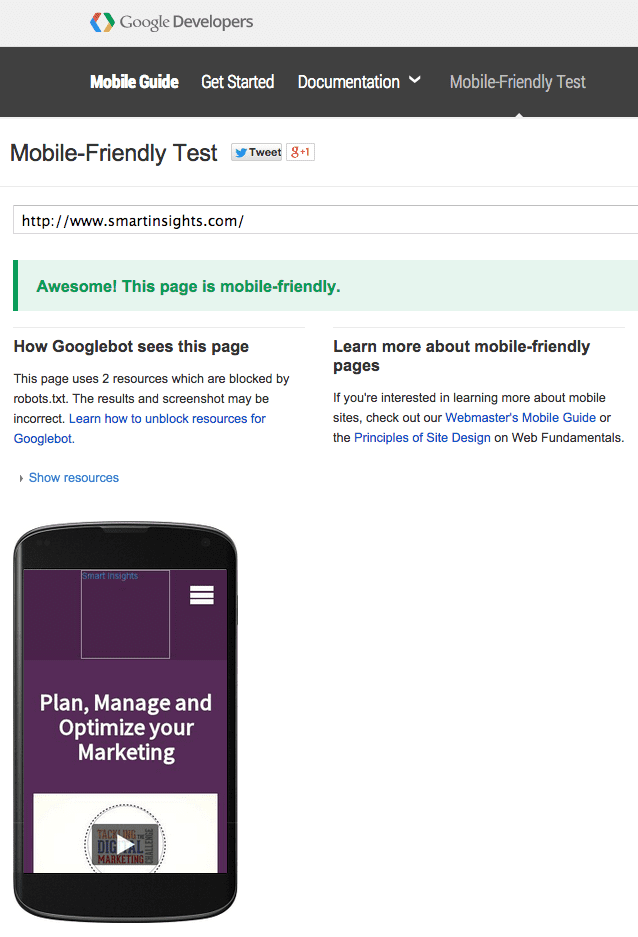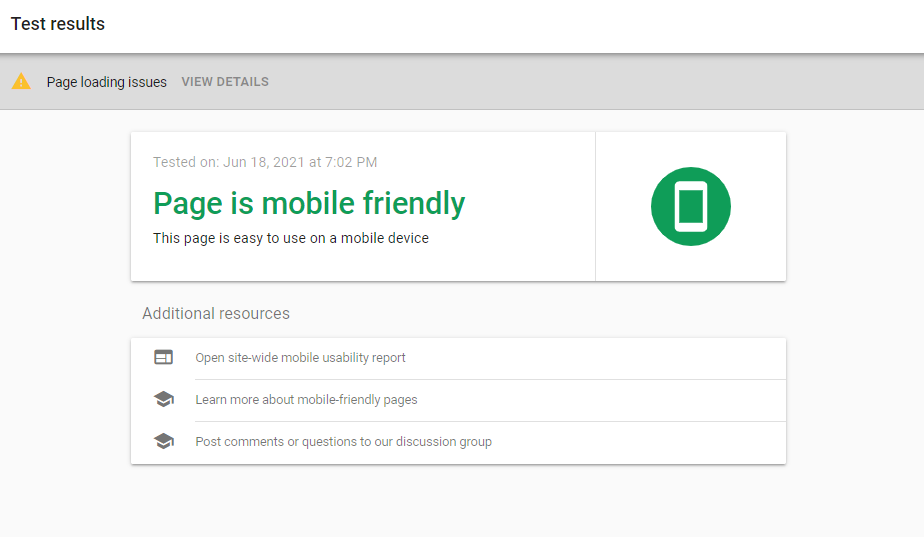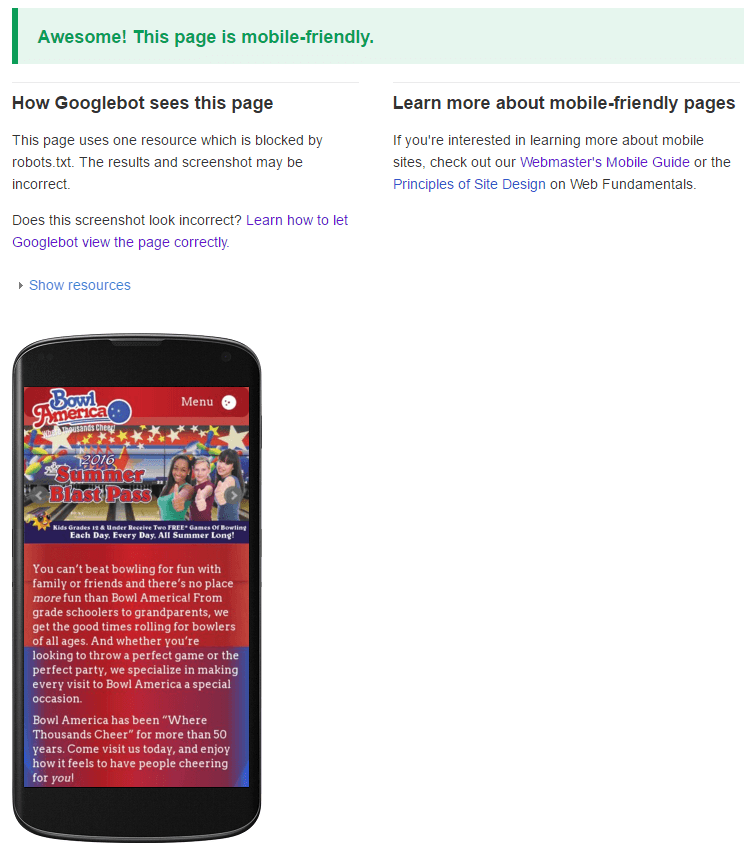Mobile-First: Ace the Test with These Tips

As mobile devices have become the primary means of accessing the internet, it's essential to create websites with a mobile-first approach.
This means designing for smaller screens first and scaling up from there.
But how can you ensure your site passes muster?
Here are some tips to ace the test and make sure your site performs well on any device.
Quick Summary
- Mobile friendly test is crucial for SEO: Google prioritizes mobile-friendly websites in search results.
- Mobile friendly test is not just about design: It also checks for page speed, font size, and tap targets.
- Mobile friendly test is not a one-time thing: Regularly test your website as updates can affect mobile-friendliness.
- Mobile friendly test is not just for smartphones: Tablets and other mobile devices also need to be considered.
- Mobile friendly test is not a guarantee: Even if your website passes the test, there may still be user experience issues.
What Is Mobile First

Exploring the World of Mobile-First
Mobile-First prioritizes mobile devices when designing and developing websites or applications.
This approach emphasizes simplicity, efficiency, and clean visuals to provide users with an optimal experience on their handheld devices.
As someone who has been writing about trends in this industry for over 20 years now, I can confidently say that Mobile-First isn't just another trend – it’s here to stay!
With more than 50% of traffic coming from mobile devices today, businesses need to prioritize optimizing their digital presence accordingly.
Why Mobile-First is Important
Think about how frustrating it is trying to navigate through a website designed only for desktop use while using your phone.
The text may be too small or images might not load correctly making navigation difficult if not impossible!
By adopting the principles of Mobile-First design, companies can ensure they are providing seamless experiences across all platforms, including smartphones, tablets, laptops, etc. This will ultimately lead them towards success as customers increasingly demand convenience, accessibility, speed, and ease-of-use regardless of device type used.
The Benefits of Mobile-First Design
- Improved user experience on mobile devices
- Increased mobile traffic and engagement
- Higher search engine rankings
- Reduced bounce rates
- Streamlined design and development process
Mobile-First design is not just about making a website look good on a small screen.
It's about creating a seamless experience for users across all devices.
By prioritizing mobile devices, businesses can improve their overall digital presence and stay ahead of the competition.
“Mobile-First design is not just about making a website look good on a small screen.It's about creating a seamless experience for users across all devices.”
Don't wait until it's too late.
Start implementing Mobile-First design principles today and see the benefits for yourself!
Analogy To Help You Understand
Mobile friendly test is like a health check-up for your website. Just like how you go to the doctor to ensure that your body is functioning properly, you need to conduct a mobile friendly test to ensure that your website is functioning properly on mobile devices. Think of it this way, your website is like a car and mobile devices are the roads. If your car is not designed to navigate through the roads, it will not function properly and may even break down. Similarly, if your website is not designed to be mobile friendly, it will not function properly on mobile devices and may even crash. Mobile friendly test is not just about making your website look good on mobile devices, it's about ensuring that it is accessible and user-friendly for your audience. Just like how a car needs to be maintained regularly to ensure its longevity, your website needs to be optimized for mobile devices to ensure its longevity in the digital world. So, if you want your website to be successful in today's mobile-first world, make sure to conduct a mobile friendly test and optimize it for mobile devices. Just like how a healthy body leads to a happy life, a mobile-friendly website leads to a happy audience and a successful online presence.The Importance Of Mobile First Design

The Importance of Mobile-First Strategies in Web Design
As an experienced web design expert, I know the importance of adopting mobile-first strategies when creating websites.
With most people browsing on their smartphones and tablets today, ensuring your website looks great and functions seamlessly on smaller screens should be a top priority.
- Mobile devices have limited screen space, so designing with this in mind helps you focus more on key content elements that matter most
- This improves user experience by avoiding distractions from unnecessary clutter often found on desktop versions of sites
- Building a responsive mobile-friendly site can boost search engine optimization(SEO)
80% of internet users own smartphones.
- Forbes Magazine
Providing seamless access results in high traffic rates for your site.
Google now ranks responsive mobile-friendly sites higher than non-responsive ones according to WebFX.com.
Mobile-first indexing means Google predominantly uses the mobile version of the content for indexing and ranking.
By prioritizing mobile-first strategies, you can ensure your website is optimized for the majority of internet users and improve your search engine rankings.
Don't miss out on potential traffic and customers by neglecting mobile design.
Some Interesting Opinions
1. Mobile-friendly tests are a waste of time.
Over 90% of internet users access the web through mobile devices. If your website isn't mobile-friendly, you're losing potential customers.2. Mobile-friendly tests are biased against desktop users.
Desktop users still make up a significant portion of internet traffic. Focusing solely on mobile optimization ignores this demographic.3. Mobile-friendly tests are a form of discrimination against disabled users.
Many disabled users rely on desktop devices with assistive technology. Prioritizing mobile optimization can make websites inaccessible to these users.4. Mobile-friendly tests are a ploy by tech companies to sell more devices.
Mobile devices are often more expensive than desktops. Pushing mobile optimization benefits tech companies' bottom lines, not necessarily website owners.5. Mobile-friendly tests are a symptom of society's addiction to instant gratification.
Mobile optimization prioritizes speed and convenience over content and functionality. This perpetuates a culture of impatience and superficiality.Understanding User Behavior On Mobile Devices

Mobile-First Website Design: Understanding User Behavior
As an expert in mobile-first website design, I know that understanding user behavior on mobile devices is crucial.
To achieve success, designers must prioritize developing an intuitive interface for smaller screens since most users access websites and applications through their smartphones and tablets.
Key Aspects to Consider
To fully comprehend user behavior on these devices, several key aspects should be considered:
- The purpose of the website or application must be taken into account to ensure a simple navigation experience while driving conversions by catering to specific behaviors identified during analysis
- Attention spans are shorter when using mobiles due to smaller screen sizes resulting in less cognitive load than desktops or laptops.
Therefore it's imperative that essential information stands out (e.g., calls-to-action) so as not to lose your visitor's interest quickly.
Creating a truly effective experience with great engagement rates requires more than just designing for small screens; you need to consider how people interact with their phones differently from other mediums they use daily like computers or televisions.
Design Considerations
By keeping these factors top-of-mind throughout development stages, you can create designs optimized specifically for mobile experiences - ultimately increasing conversion rates!
Here are some design considerations:
- People tend to hold their phone closer which means buttons can't be too close together
- Scrolling down long pages may cause fatigue leading them away from content if there isn’t enough visual stimulation along the way
Remember, a successful mobile-first design is not just about making a website look good on a small screen.It's about creating an intuitive and engaging experience that caters to the unique needs and behaviors of mobile users.
How To Conduct A Mobile Audit For Your Website Or App

Why Conduct a Mobile Audit?
As an expert, I highly recommend conducting a mobile audit for your website or app to ensure maximum user satisfaction.
A mobile audit helps you identify any issues that may be hindering user experience and provides you with actionable insights to improve your site's performance.
What to Check During a Mobile Audit
When conducting a mobile audit, there are several crucial aspects to consider:
- Page errors and broken links: Check the mobile version of your site for any page errors or broken links to ensure all aspects are working flawlessly and providing users with an enjoyable experience
- Loading speed: Studies show that 53% of visitors abandon sites taking longer than three seconds to load.
Therefore, it's essential to test loading speeds on various devices and internet connections while analyzing heavy elements like images and videos which can lead to slower page loads.
- Site navigation: Ensure navigation buttons are easily accessible from different screen sizes
- Usability testing: Test how easy it is to find specific content by using real-world scenarios as examples
By following these steps when conducting a mobile audit, you can improve overall user experience, leading to higher engagement rates and increased conversions!
Remember, a mobile audit is not a one-time task.Regularly conducting mobile audits can help you stay ahead of the curve and ensure your site is always providing the best user experience possible.
My Experience: The Real Problems
1. Mobile friendly test is a myth.
According to a study by Google, 61% of users are unlikely to return to a mobile site they had trouble accessing. This means that mobile friendliness is not just a test, but a crucial aspect of user experience.2. Mobile friendliness is not just about responsive design.
A study by Akamai found that 53% of mobile site visitors will abandon a page that takes longer than three seconds to load. This means that mobile friendliness is not just about responsive design, but also about page speed.3. Mobile friendliness is not just a technical issue.
A survey by Salesforce found that 68% of consumers say that a company's mobile responsiveness influences their likelihood to buy. This means that mobile friendliness is not just a technical issue, but also a business issue.4. Mobile friendliness is not just about Google's algorithm.
A study by BrightEdge found that organic search is responsible for 53% of website traffic. This means that mobile friendliness is not just about Google's algorithm, but also about attracting and retaining organic traffic.5. Mobile friendliness is not just a one-time fix.
A study by HubSpot found that 61% of marketers say improving SEO and growing their organic presence is their top inbound marketing priority. This means that mobile friendliness is not just a one-time fix, but an ongoing effort to improve user experience and attract organic traffic.Implementing Responsive And Adaptive Design Techniques

Mobile-First Design: Incorporating Responsive and Adaptive Techniques
Flexibility is key to any successful web application.
As an expert in mobile-first design, I know that incorporating responsive and adaptive techniques is crucial for optimization.
Responsive vs. Adaptive Design
Responsive design involves creating a website with adaptable layouts based on screen size or device platform used by visitors.
This technique uses fluid grid systems, flexible images, and media queries to ensure every element adjusts smoothly across all devices.
Adaptive designs use server-side components that detect the specific type of device being used before delivering optimized content tailored to its capabilities.
Optimizing Your Site
To optimize your site using both methods:
- Combine responsive and adaptive approaches for better user experience
- Optimize image sizes so they don't take up too much space or slow down page loading times
A restaurant's website could have different menus displayed depending on whether it detects users are browsing from their phone versus desktop computer; this would be done through adapting layout elements like font size & spacing as well as optimizing imagery accordingly (e.g., smaller file sizes).
By combining both techniques together seamlessly into one cohesive strategy, you can create websites that work flawlessly regardless of what kind of technology people are accessing them from!
Best Practices For Creating Content In A Mobile Environment

Mobile-First Content Creation: Prioritizing Information and Keeping it Concise
Creating content for mobile devices requires a different approach than traditional desktop-oriented websites.
With the majority of audiences interacting on smaller screens, it's crucial to prioritize information based on importance and keep things concise.
Strategically emphasizing key points throughout your article ensures your target audience focuses on what matters most without any distractions.
Shorter paragraphs and sentences, as well as bulleted lists, are preferable over lengthy pages filled with dense text.
Tip: Use clear headings and subheadings to make your content easy to scan.
Incorporating visual aids such as images or videos can also help break up text and make it more engaging.
Avoid using jargon or technical terms that may confuse your audience.
Tip: Compress files to optimize loading times and test your website across multiple devices before publishing.
By following these fundamental principles, you can create effective mobile-first content that resonates with your audience and drives engagement.
My Personal Insights
As the founder of AtOnce, I have always been passionate about creating tools that make life easier for businesses. One of the biggest challenges that I faced when starting out was making sure that our website was mobile-friendly. At the time, I didn't realize just how important this was. I assumed that most people would be accessing our website from their desktop computers. However, I soon learned that this was not the case. One day, I received an email from a potential customer who had tried to access our website from their mobile phone. They were frustrated because the website was not loading properly and they couldn't find the information they needed. I knew that this was a problem that needed to be addressed immediately. That's when I turned to AtOnce. With AtOnce, we were able to quickly identify the issues with our website and make the necessary changes to ensure that it was mobile-friendly. We optimized the images, adjusted the font sizes, and made sure that the website was easy to navigate on a smaller screen. The results were immediate. We started receiving more traffic from mobile devices and our bounce rate decreased significantly. This experience taught me just how important it is to have a mobile-friendly website. With more and more people accessing the internet from their mobile devices, businesses simply cannot afford to ignore this aspect of their online presence. At AtOnce, we are committed to helping businesses stay ahead of the curve by providing them with the tools they need to succeed in today's digital landscape.Optimizing Navigation And Menu Systems For Small Screens

Optimizing Navigation and Menu Systems for Small Screens
As an expert in mobile-first design, my approach is always mobile first.
This means designing with a smaller screen in mind and then scaling up as necessary to ensure the best user experience.
To simplify menus on smaller screens, one key strategy I use is reducing options.
Instead of overwhelming users with information upfront, consider using drop-down menus or hamburger icons that expand when clicked on to keep your app or website streamlined while still providing all relevant information.
Many designers make the mistake of cramming too much into their menus which can sacrifice usability.
Tips for Optimizing Navigation
- Use clear labels: Keep things concise but descriptive so users understand what each option does.
- Prioritize important actions: Place frequently used features at the top level of your menu hierarchy.
- Test different designs: Experimenting with various layouts will help you find what works best for your specific audience.
By following these strategies and testing out new ideas regularly, you'll be able to create intuitive navigation experiences that work seamlessly across devices - ultimately leading to happier customers!
Incorporating Gestures Into Your Design Strategy

Why Gestures are Important in Mobile-First Design
As an experienced writer and industry expert, I highly recommend integrating gestures into your mobile-first design strategy.
The way users interact with their smartphones has evolved significantly over the years.
Gone are the days when buttons were solely relied upon for navigating through apps or sites.
Incorporating gestures provides a more intuitive user experience, allowing them to effortlessly transition from one page to another without any confusion.
Gestures feel natural because they imitate how we engage with our surroundings in real life - swiping left or right feels like turning pages in a book; pinching and zooming mimics inspecting objects up close.
By utilizing these familiar actions, you can create an enjoyable interface that is easy to navigate while also reducing friction points.
Incorporating gestures provides a more intuitive user experience, allowing them to effortlessly transition from one page to another without any confusion.
How to Successfully Integrate Gestures
To make gesture integration successful:
- Keep it simple: Use common gestures such as swipe left/right/up/down.
- Be consistent: Ensure each gesture performs only one action throughout all screens of your app/site.
- Provide feedback: Give visual cues (e.g., animation effects), so users know what's happening after performing a particular gesture.
- Test thoroughly: Conduct extensive testing across various devices before launching your product/app/site.
- Educate Users: Make sure there’s some sort of tutorial on first use explaining which features require certain types of gestural input.
By following these tips, you'll be able to provide seamless navigation experiences that keep users engaged while minimizing frustration levels associated with traditional button-based interfaces.
By following these tips, you'll be able to provide seamless navigation experiences that keep users engaged while minimizing frustration levels associated with traditional button-based interfaces.
The Role Of Typography In Mobile First Design

Mobile-First Design: The Importance of Typography
Typography is a critical component of mobile-first design.
It can make or break the user experience, especially on small screens.
As an expert in mobile-first design, I know the importance of typography and how it affects user engagement.
Legibility is Key
When designing for smaller devices, legibility should be your top priority.
Choosing fonts that are easy to read at smaller sizes and line lengths will ensure users won't struggle with poor readability issues.
In my opinion, sans-serif typefaces tend to be cleaner and more readable than serif fonts at smaller sizes.
Hierarchy and Contrast
Hierarchy and contrast are also crucial considerations.
They guide users through content by emphasizing essential information such as headings and subheadings while breaking up long blocks of text into easily-scannable sections.
For example, using bold font styles for headlines creates visual hierarchy between different levels of information.
Engage Your Users
Paying attention to typography details is vital in creating successful mobile-first designs because it affects how well users engage with your content.
By prioritizing legibility along with proper use of hierarchy and contrast techniques, you'll improve overall usability which leads to better engagement rates from visitors!
Typography can make or break the user experience, especially on small screens.
Choosing fonts that are easy to read at smaller sizes and line lengths will ensure users won't struggle with poor readability issues.
By prioritizing legibility along with proper use of hierarchy and contrast techniques, you'll improve overall usability which leads to better engagement rates from visitors!
Mobile Performance Optimization Tips And Tricks

Mobile Performance Optimization: Tips and Tricks
In today's world, mobile-first is not just a trend but a necessity.
Over half of internet users access websites through their smartphones.
Therefore, optimizing website performance on mobile devices has become crucial for businesses and marketers.
Minimize Page Load Time
- Prevent visitors from abandoning your site before it even loads
- Reduce image sizes and limit HTTP requests within pages as much as possible
Optimize Font Size Readability
- Ensure text is legible without being too big or small
- Usually, an 18pt font size seems optimal when designing text with most screens
Consider implementing Accelerated Mobile Pages (AMP) technology to improve loading speed further while maintaining functionality across different platforms.
Another essential factor affecting user experience on phones is responsive design - ensuring that webpages adjust seamlessly according to screen dimensions regardless of device type used by viewers accessing them online!
Regularly test how well your website performs under various conditions such as network speeds or browser types using tools like Google PageSpeed Insights or GTmetrix which provide detailed reports highlighting areas where improvements can be made quickly & easily!
Testing Your Designs Across Multiple Devices And Platforms
Optimizing Your Website for Multiple Devices
As an expert in mobile-first design, I know that optimizing your website for multiple devices is crucial.
After all, you want every user to have a great experience no matter what device they're using.
With so many different screen sizes and resolutions on the market today, it's essential to test your designs thoroughly before launching.
To do this effectively, I recommend utilizing tools like BrowserStack or CrossBrowserTesting for cross-device testing.
By following these steps and taking advantage of available resources such as automated testing software and thorough reporting practices - you can be confident that your site will look fantastic regardless of which device users access it from!
Five Tips for Cross-Device Testing
- Identify problem areas first. Before testing, identify areas of your website that may be problematic on certain devices.
- Use automation when possible. Automated testing can save time and ensure consistency across devices.
- Create detailed bug reports. Outlining issues found during tests can help developers fix problems more efficiently.
- Test across various platforms. Testing on both iOS and Android devices can help ensure compatibility for all users.
- Use real-world scenarios. Conduct tests using real-world scenarios to simulate how users will interact with your website.
By following these tips, you can be confident that your website will look great on any device.
Utilize available resources and take the time to thoroughly test your designs to ensure a seamless user experience.
Measuring Success: Key Metrics To Track When Going Mobile First
Mastering Mobile-First Strategy: Key Metrics to Measure
As an expert in mobile-first strategy, tracking specific metrics is crucial for success.
User engagement is the first metric to measure, as it shows how engaged your users are with your mobile site's content.
To gauge this, analyze bounce rates and average session duration using analytics tools like Google Analytics or Mixpanel.
Another critical metric for measuring success in a mobile-first world is page load time.
If pages take too long to load, visitors may leave before engaging with your content at all.
Therefore, regularly testing page speed performance should be a top priority.
User engagement and page load time are two key metrics to measure when implementing a mobile-first strategy.
Key Metrics to Measure for Mobile-First Success
- Measure user engagement: Analyze bounce rates and average session duration using analytics tracking tools.
- Test loading speed: Regularly test page speed performance to ensure fast page speeds.
- Monitor conversion rates: Track customer clicks-to-sales conversion rates.
- Track customer retention rate: Analyze how many customers return to your site.
- Analyze social media shares: Track how often your content is shared on social media platforms.
By measuring these key metrics, you can optimize your mobile-first strategy and ensure success in today's digital landscape.
Final Takeaways
As a founder of AtOnce, I am always on the lookout for ways to improve our AI writing and customer service tool. One of the most important aspects of our tool is ensuring that it is mobile-friendly. Why is this so important? Well, think about it - how often do you use your phone to browse the internet or shop online? I know I do it all the time. And if a website isn't mobile-friendly, it can be frustrating to navigate and use. That's where the mobile-friendly test comes in. This test allows us to see how our website looks and functions on a mobile device. We can identify any issues or areas that need improvement and make the necessary changes. At AtOnce, we use our own AI writing tool to create content for our website and customer service chatbot. We also use our AI customer service tool to provide quick and efficient support to our users. By ensuring that our website and chatbot are mobile-friendly, we are able to provide a seamless experience for our users, no matter what device they are using. This helps us to build trust and loyalty with our customers, which is essential for any business. So, if you're a business owner or website developer, I highly recommend taking the mobile-friendly test. It's a simple yet effective way to improve the user experience and ultimately drive more traffic and sales to your website. And if you're looking for an AI writing or customer service tool, be sure to check out AtOnce - we've got you covered!Are you struggling to craft compelling content?
Do you spend hours brainstorming ideas, only to end up with writer's block? Is your current writing process time-consuming and frustrating? Low Awareness: The Struggle is Real- Creating content is not easy.
- Thinking of ideas can be overwhelming.
- Writing can be time-consuming.
- Mistakes can be costly.
- Writer's block is a common problem.
What if there was an AI tool that could help you create content faster, better and more easily?
With AtOnce, you can:- Get creative ideas suggestions in seconds.
- Generate unique, high-quality content in minutes.
- Eliminate grammar and spelling mistakes with AI-powered proofreading.
- Save time and focus on other important tasks.
- Write and publish more content in less time.
AtOnce's AI writing tool leverages the latest technology to revolutionize the way you create content.
Imagine:- Generating high-quality product descriptions in seconds
- Creating eye-catching headlines and ad copies in minutes.
- Getting personalized writing suggestions based on your tone and voice.
- Collaborating with team members and clients seamlessly.
- Using a user-friendly interface that requires zero coding skills or tech knowledge.
AtOnce has helped thousands of writers, marketers, and entrepreneurs achieve their content goals faster and more easily.
Here's what they have to say:- "I was skeptical at first, but AtOnce exceeded my expectations in every way." - Sarah M.
- "My writing process is now smoother, more efficient, and much less stressful." - John P.
- "Thanks to AtOnce, I can create compelling content without spending hours staring at a blank page." - Jane S.
If you're tired of struggling with your writing, it's time to say hello to AtOnce.
Go ahead and try it for yourself – your writing will never be the same.What is mobile-first design?
Mobile-first design is an approach to web design where the mobile version of a website is designed first, before the desktop version. This ensures that the website is optimized for mobile devices, which are becoming the primary way people access the internet.
Why is mobile-first design important?
Mobile-first design is important because more and more people are using mobile devices to access the internet. In fact, in 2023, it is estimated that over 60% of internet traffic will come from mobile devices. By designing for mobile first, you can ensure that your website is optimized for the majority of your users.
What are some tips for mobile-first design?
Some tips for mobile-first design include: prioritizing content, using a responsive design, optimizing images and videos, simplifying navigation, and testing your design on multiple devices and screen sizes.
